

To send a message to an author, click on the author's name at the end of the article.
This Month in Ag Connection | Ag Connection - Other Issues Online

It is time to starting considering frost seeding legumes such as red clover and other legumes into stands of grass (fescue, orchard grass, etc.). Typically producers should frost seed in February, however during some years like in 2012, February was too late. Producers need to be cognizant of weather conditions and what weather forecasts dictate. Look at forecasts and plan accordingly when deciding to frost seed legumes. Frost seeding legumes, such as red clover adds more nitrogen into the soil then one might think and can save on fertilizer costs.
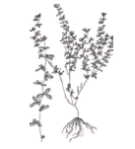
Producers should consider frost-seeding 4 lbs./acre of red clover every year or 6 to 8 pounds every other year, Other options include 10 lbs./acre of lespedeza annually or 6 lbs./acre of birdsfoot trefoil if desired. Depending on how good the stand is, red clover can contribute 10-90 lbs./acre during the first year and older stands can average 40 to 130 lbs./acre and birdsfoot trefoil, can contribute between 30-60 lbs./acre during the first year. Adding legumes to existing grass stands can increase pasture productivity significantly, according to researchers.
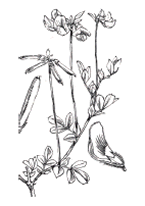
Soil fertility is very important, so make sure you have an updated soil test. With respect to establishing legumes in your current pasture, pH and phosphorus are the most important factors. For most legumes pH must be 5.5 or greater, and for alfalfa soil pH needs to be 6.5-7.0. Ideally, soil testing should be done several months prior to seeding (earlier in the fall is ideal, but as long as the ground is unfrozen and you can probe the ground, now is as good of time as any). Most extension offices have a soil probe available and basic soil tests show producers/landowners (pH, organic matter, P, K, etc.). When frost-seeding or establishing other legumes it is not necessary to add nitrogen to the soil. If you need information on how to soil test your crop/hay fields and pastures, go to http://extension.missouri.edu/p/G9215
(Additional resources Red Clover-G4638, Birdsfoot Trefoil-G4640, Annual Lespedeza-G4515 and Seeding Rates, Dates and Depths for Common Missouri Forages-G4652. To look at these online use the website above and just change the last four digits, G followed by the four numbers.)
Source: Wendy Rapp, Livestock Specialist
This Month in Ag Connection | Ag Connection - Other Issues Online
When people hear the word drone some may look to the sky and question. Are they the next target for a missile strike? Are the police watching them? Is what they do in their backyard going to show up on the internet? Rarely do you hear nice things about drones, yet they can be used for good.
How does one change public perception? Referring to the technology in another way should help. The Federal Aviation Administration (FAA) calls them Unmanned Aircraft Systems or UAS. The other terminology being utilized is UAV or Unmanned Aerial Vehicle.
Can I utilize a UAV in agriculture today? The answer is no, maybe, or yes depending on how it would be utilized. At this point in time, no commercial use is allowed under current FAA rules. Though, a producer or citizen can utilize UAV technology when flying less than 400 feet high, no closer than 3 miles from an airport, and maintaining visual contact with the UAV at all times.
Current status of UAV technology available ranges from quad copters, helicopters, and fixed wing aircraft. Off-the-shelf commercially available action video cameras can provide an introductory method of collecting aerial photography. Today producers can get started utilizing UAVs with an investment of $1500 - $11000.
Here are three examples where UAV technology could change the face of American agriculture and possibly the public's perception of the use of UAV technology:
1. Crop Scouting:
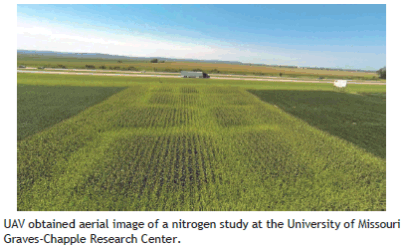 Through University of Missouri Extension efforts, initial work has been initiated to explore the possible uses of UAVs for crop scouting purposes such as detecting nitrogen deficiencies.
Through University of Missouri Extension efforts, initial work has been initiated to explore the possible uses of UAVs for crop scouting purposes such as detecting nitrogen deficiencies.
There are a number companies just waiting for the U.S. to start letting farmers take advantage of various types of UAVs. For a commercial example, a GPS controlled plane would automatically navigate in a pattern over a farmer's fields while taking GPS referenced high-resolution images, letting farmers know which parts of the field are healthy and which parts may need some attention.
2. Disease Detection:
By the time a plant typically shows signs of disease, it's already too late. Researchers at Virginia Tech. are currently evaluating UAVs to track plant pathogens high in the atmosphere. Being able to track this type of information in a network could help better model and prediction how plant disease might spread. This would ultimately help a producer make a more informed decision of when to spray.
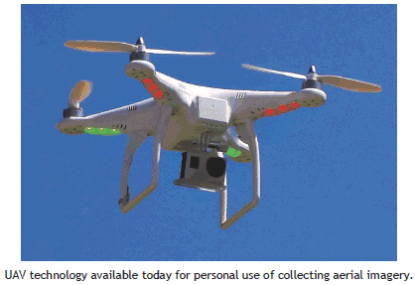
3. Crop Spraying:
First introduced to Japanese farmers in 1990, Yamaha's RMAX helicopter now sprays 30 percent of the country's rice paddies. Robotic helicopters are perfectly suited to maneuver the rugged terrain and small fields where rice grows—it's safer than sending manned aircraft.
At the University of California-Davis, researchers have experimented with the same chopper in Napa Valley vineyards. Unmanned copters only hold a few gallons of spray at a time but could be invaluable in wine production in the future.
Interestingly, what all these uses of UAVs have in common is the ability to give farmers better data about their fields. Being more informed provides the ability to use pesticides and other chemicals more efficiently.
If the FAA keeps to its deadlines, September 30, 2015 will be the day unmanned aircraft systems are allowed to enter the airspace for commercial use. It's expected that agriculture— not public safety—will be the number one market for UAV technology. For now one can start exploring on their own or stay tuned to see what the potential for commercial uses of UAVs will be in agriculture.
Source: Kent Shannon, Natural Resource Engineer
This Month in Ag Connection | Ag Connection - Other Issues Online
Fertilizer applications in 2013 were based on anticipated normal yields, but due to the drought conditions causing lower yields there may be nutrient carryover. Nutrient carryover affects fertilizer needs of the crop planted the year following the drought, in this case 2014. Nutrients of concern regarding carryover are nitrogen, phosphorous, and potassium.
Phosphorous (P) and potassium (K) are rather immobile in the soil; P and K which were not used by the 2013 crop can be credited for the 2014 crop. A simple formula can be used to estimate unused P and K; this is a ratio of actual yield to fertilized-for yield goal. For example, if 45 pounds of P was applied for a yield goal of 150 bushels corn, and the actual yield was 50 bushels, 50/150 bushels were produced, or one-third of the yield goal. With the assumption that yield is proportional to nutrient removal, only one-third of the P and K were utilized by the crop, and the remaining two-thirds are available for the 2014 crop. Note that this only applies to a crop harvested in the traditional manner. If the entire plant was removed (for green chop, silage, or corn or soybean hay), much more potassium was removed from the soil than would be by a typical crop, and a soil test is the only accurate means of quantifying the soil's potassium level.
Nitrogen presents a different scenario. Nitrate can remain in the soil following drought, and is susceptible to loss over winter. The potential winter loss of nitrogen makes estimation of carryover difficult. Carryover is more likely to occur when the 2013 crop was not a legume, nitrogen (as fertilizer, manure, or legume credit) application rate was moderate to high, yield was below what was expected, and winter precipitation is normal or less than normal. A preplant nitrogen test can be performed to determine the amount of carryover nitrogen to credit the 2014 crop. The best time for this test is in the spring (after frost). University of Missouri Extension has created a publication, guide 9177, Preplant Nitrogen Test for Adjusting Corn Nitrogen Recommendations, which guides the producer in the method to obtain and submit for analysis a preplant nitrogen test.
Source: Alix Carpenter, Agronomy Specialist
This Month in Ag Connection | Ag Connection - Other Issues Online
General consensus has indicated that there is a yield penalty for continuous corn. Field trials throughout the corn belt has shown an average continuous corn yield loss of 10 to 20%, but losses can be much larger in years with weather stresses. In very good growing years, when corn yields are high, the yield loss is small. In poor growing years, when yields are lower, the yield penalty is greater. In low yielding environments, the yield advantage of an annual corn-and-soybean rotation, compared to continuous corn, was frequently greater than 25%. according to Minnesota data. It is generally accepted that crop rotation is the only sure way to eliminate the continuous corn yield penalty. However, tillage and good residue management can reduce the penalty.
Residue management is considered essential to reduce or minimize the yield penalty. Research at two sites at the University of Illinois research farm in Champaign in 2011 and 2012 evaluated the effects of stover removal on the continuous corn yield penalty. Removing half of the corn stover boosted yields by 19 bushels per acre compared to no stover removal. However, that wasn't enough to recoup the continuous-corn yield penalty, which ranged from 25 to 49 bushels per acre. In a corn-corn-soybean rotation, producers can get away with some type of reduced tillage, especially strip-tillage. Many continuous corn growers find that they need full width tillage after the second year to incorporate residue and speed decomposition. University of Wisconsin research concluded that conventional tillage increased continuous corn yields 8 to 14% after the second year compared to no-till, but still did not overcome the continuous corn yield penalty. The main thing with corn-on-corn is to avoid seed contact with trash.

The average continuous corn yield penalty increased nearly threefold from the third year to the seventh year of successive corn crops according to 5 years of research in east-central Illinois by the University of Illinois. They also found that the yield penalty persisted regardless of nitrogen rates.
A study from the University of Illinois indicates that the best predictors of the yield penalty in any given year are nitrogen (N) availability, number of years in continuous corn and weather.
N availability - Soil mineralization decreases in continuous corn systems. In very good growing years, when soils mineralize a lot of N, increased N supply can largely offset the yield penalty, however higher N rates do not eliminate the yield penalty during average or poor growing seasons.
Number of years in continuous corn - The yearly residue accumulation in continuous corn can lower soil temps and delay germination, tie up N, harbor diseases and fungi, and interfere with seed placement, stand establishment and soil microorganisms.
Unfavorable weather - Weather is more detrimental to corn grown continuously than in rotation.
Weather and soil N mineralization are beyond a producers control. Managing corn residue has the greatest potential to reduce the continuous corn yield penalty.
Source: Wayne Crook, Agronomy Specialist
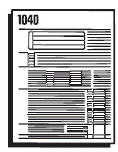
This Month in Ag Connection | Ag Connection - Other Issues Online
Every county extension office should have several copies of IRS publication 225-Farmer's Tax Guide available for free. You are welcome to stop and pick up a copy.
As of Jan. 1st the fee structure changed for nematode analysis. The campus website is in the process of making changes. The fees are as follows: Egg Counts - $20, Plant Parasitic Nematodes Assay-$30, Quarantine Samples-$30, Full HG Race Test (MO Residents)-$100, (Out of state) - $150 and Modified Race Test-$75 If samples are submitted through county extension centers there may be a handling/shipping fee.

Publishing Information
Ag Connection is published monthly for Northeast and Central areas of Missouri producers and is supported by the University of Missouri Extension, the Missouri Agricultural Experiment Station, and the MU College of Agriculture, Food and Natural Resources. Managing Editor: Mary Sobba.